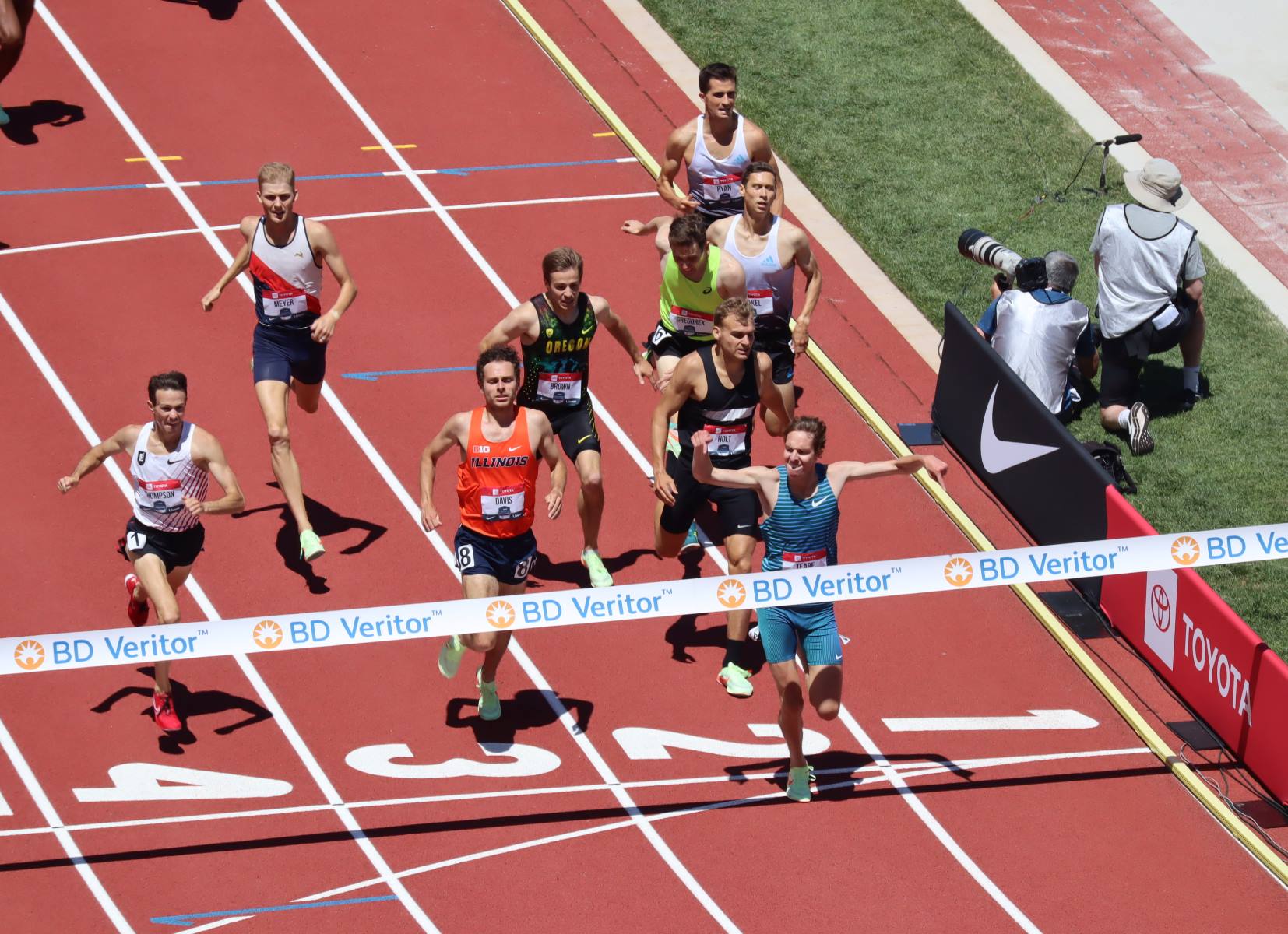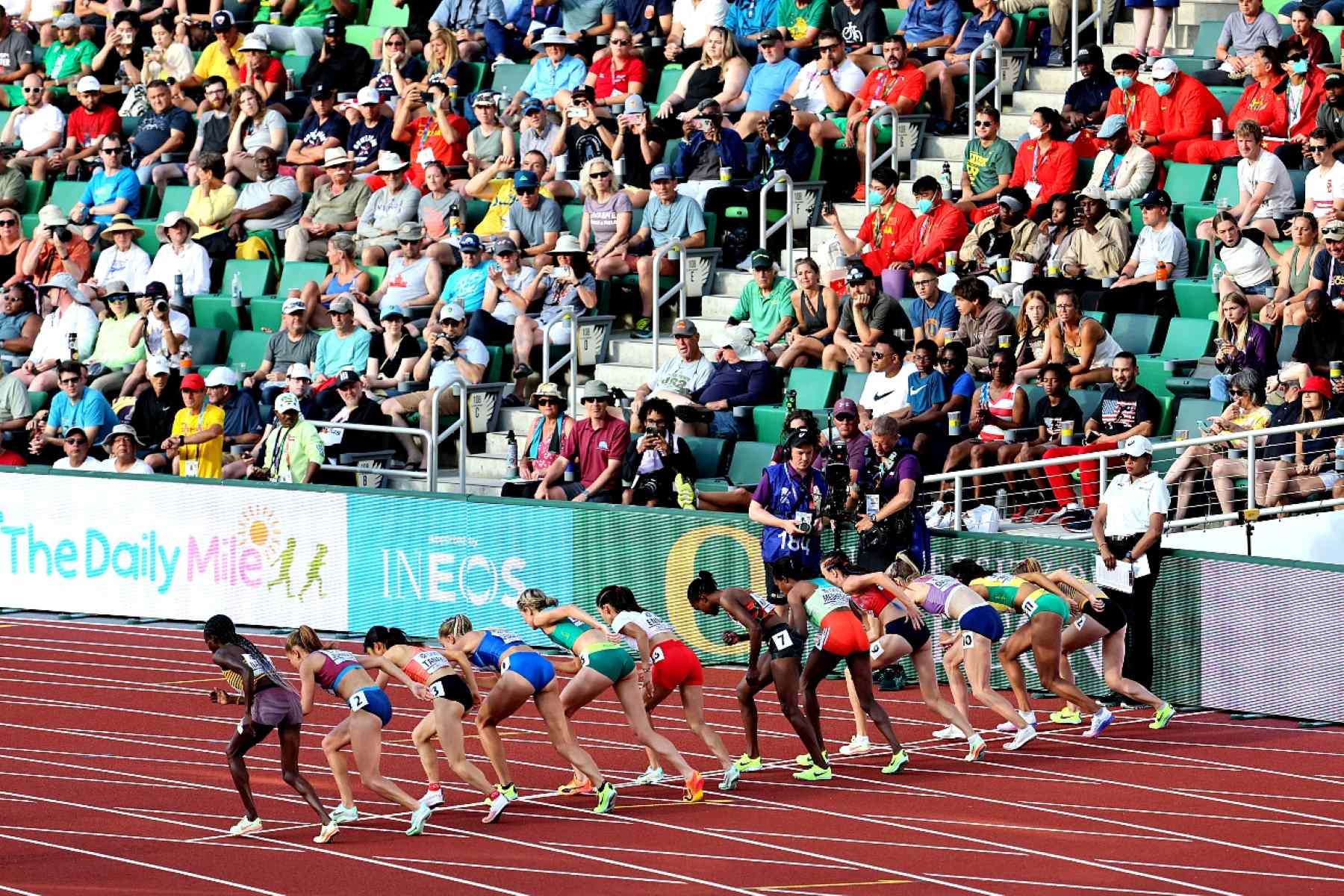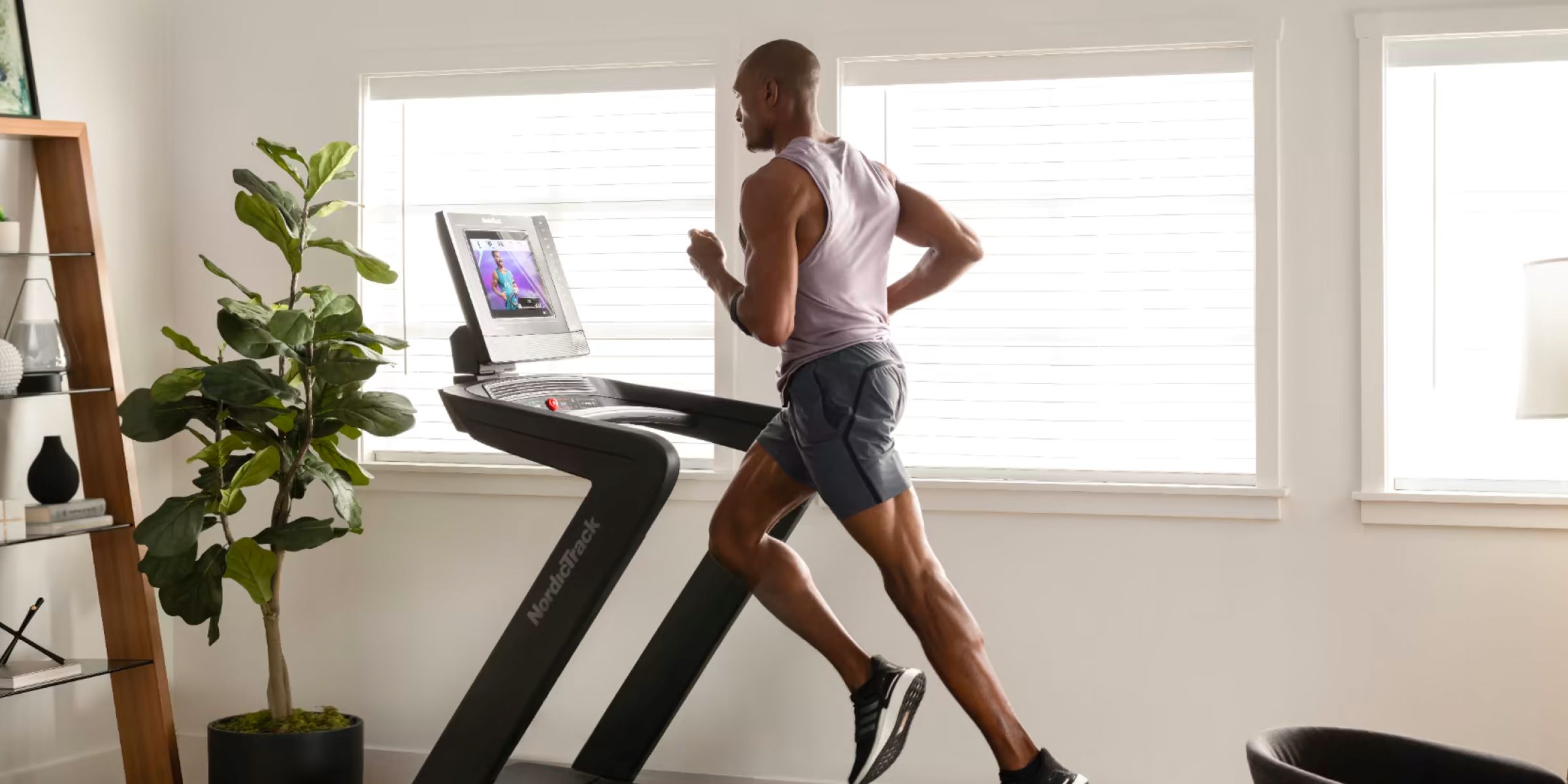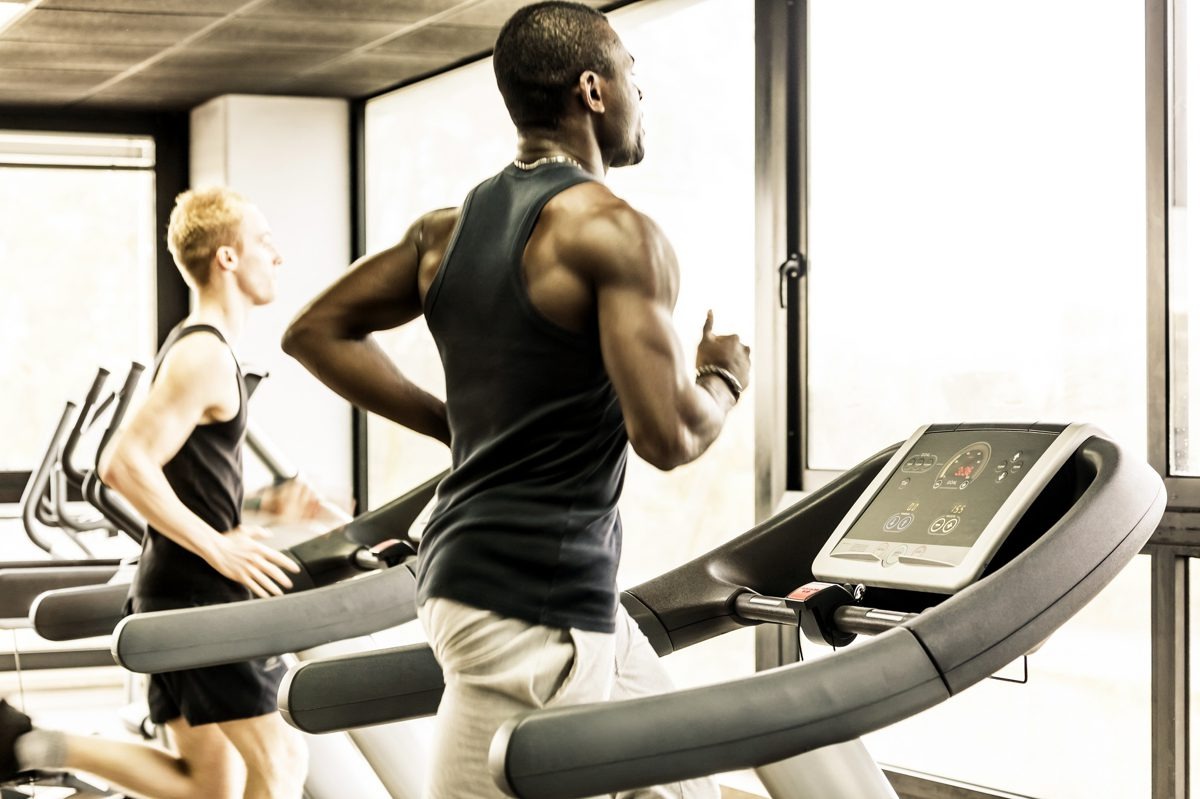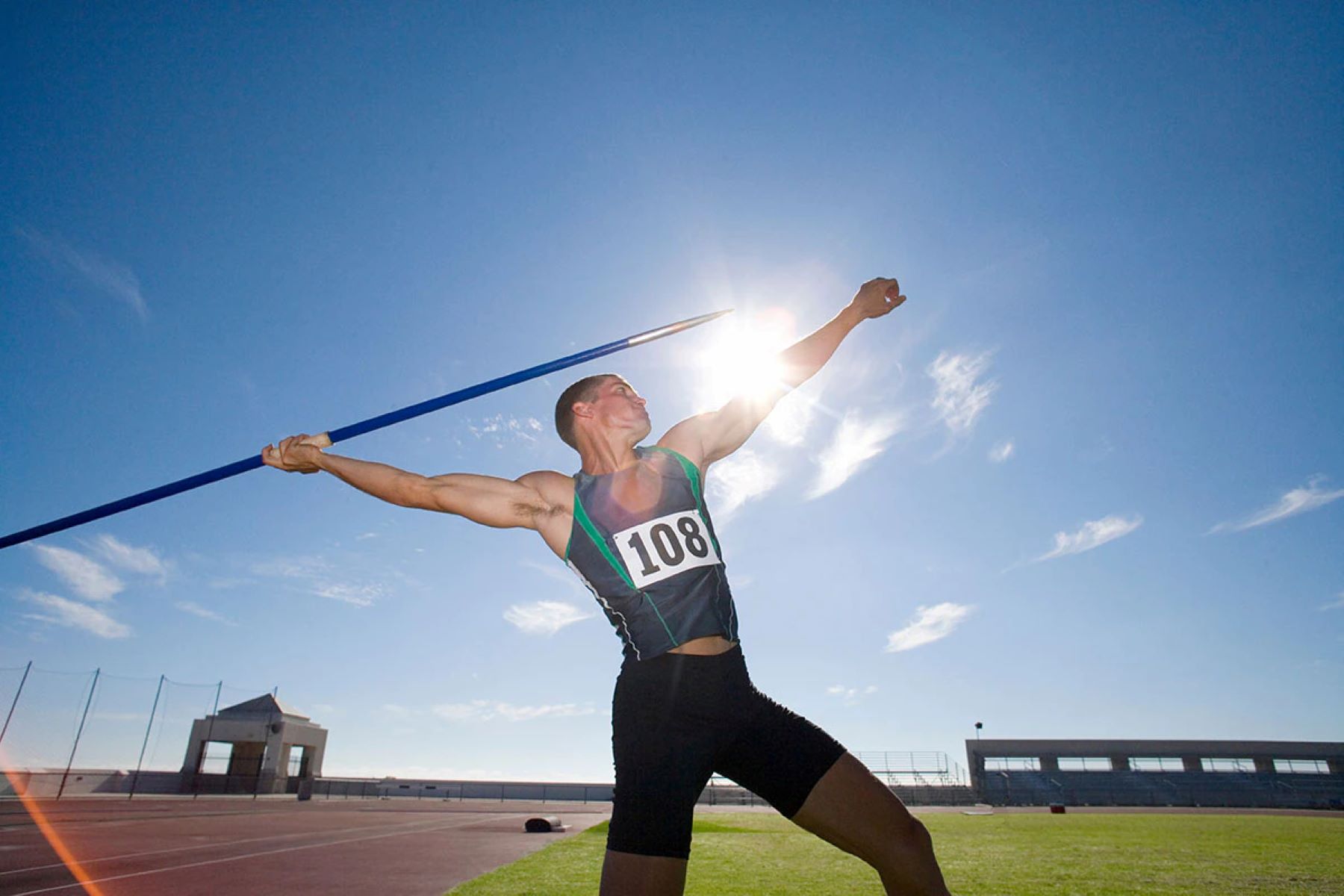

Featured
How Far Is 100 Meters On A Treadmill
Modified: January 2, 2024
Discover how far you can go on a treadmill with our featured article on measuring distance. Uncover the secrets of reaching 100m and take your workouts to the next level.
Introduction
Welcome to the world of fitness and exercise! Whether you are a seasoned athlete or just starting your fitness journey, a treadmill is a popular choice for indoor cardio workouts. Not only does it offer convenience and versatility, but it also allows you to track various metrics, such as distance, speed, and calories burned.
One common question that often arises when using a treadmill is: How far is 100 meters on a treadmill? To accurately understand the distance measurement on a treadmill, it is essential to consider several factors, including the treadmill’s settings and features, as well as your individual running or walking style. In this article, we will explore the ins and outs of measuring distance on a treadmill, highlighting the factors that can affect accuracy and examining alternative methods for distance measurement.
Whether you’re training for a race, aiming to improve your endurance, or simply keeping track of your daily workouts, understanding how far you are running or walking on a treadmill is crucial for setting and achieving your fitness goals. So let’s dive into the world of treadmills and explore how distance is calculated!
Understanding the Treadmill
Before we dive into the specifics of measuring distance on a treadmill, let’s gain a better understanding of how a treadmill works. A treadmill is a stationary exercise machine that allows you to simulate walking or running on a surface that moves beneath you. It typically consists of a flat running deck with a moving belt that is powered either by a motor or your own running motion.
Treadmills come with various features and settings that can enhance your workout experience. Most modern treadmills have a control panel that allows you to adjust the speed, incline, and other parameters to customize your workout intensity. Additionally, many treadmills nowadays come equipped with built-in digital displays that track important metrics such as distance, time, speed, and calories burned.
Understanding these features and settings is essential as they impact how the treadmill measures and displays the distance you have covered. Different treadmills may have slight variations in their functionality and calibration, so it’s important to familiarize yourself with your specific treadmill’s user manual for accurate distance measurements.
The treadmill’s speed settings can have a significant impact on distance measurement. Some treadmills are calibrated to measure distance based on a specific speed setting, such as miles per hour (mph) or kilometers per hour (km/h). This means that the distance covered will be accurately displayed when you run or walk at the designated speed on the treadmill.
Other treadmills may allow you to manually input your own speed, such as using a decimal point to indicate your desired pace. In this case, the accuracy of distance measurement may vary depending on how closely you match your intended speed and the actual speed that the treadmill records.
Furthermore, the incline settings on a treadmill, if applicable, can also influence the distance measurement. When you increase the incline, you are essentially running or walking uphill, which requires more effort and increased distance covered compared to running or walking on a flat surface. Therefore, if you are using an inclined setting on your treadmill, the distance measurement will account for the added effort and reflect a slightly greater distance covered.
Now that we have a better understanding of the basic workings and settings of a treadmill, let’s explore how distance is calculated on these fitness machines in the next section.
Calculating Distance on a Treadmill
When it comes to measuring distance on a treadmill, the calculation is typically based on the speed and time you spend running or walking. The general formula for calculating distance is:
Distance = Speed x Time
Let’s say, for example, you are running at a speed of 10 kilometers per hour (km/h) for 30 minutes on a treadmill. To calculate the distance covered, you would multiply the speed (10 km/h) by the time (0.5 hours):
Distance = 10 km/h x 0.5 hours
Distance = 5 kilometers
This calculation assumes a constant speed throughout your workout, which may not always be the case. If you vary your speed during your treadmill session, you will need to break down your workout into different time increments and calculate the distance for each segment using the formula above. You can then add up the distances to get the total distance covered for that workout.
Keep in mind that the accuracy of the distance calculation depends on the accuracy of the speed and time measurements. Treadmills with advanced technology and higher price ranges often provide more precise speed readings, resulting in more accurate distance calculations. It’s always a good idea to double-check your treadmill’s user manual to understand how it calculates distance and ensure you set the correct speed units.
Additionally, you should also consider the quality and calibration of your treadmill. Over time, the belt tension on a treadmill can change, affecting the accuracy of distance measurement. Regular maintenance, such as properly lubricating the belt and aligning the running deck, can help maintain the treadmill’s accuracy and ensure consistent distance calculations.
In the next section, we’ll explore the various factors that can affect the accuracy of distance measurement on a treadmill, so keep reading!
Factors Affecting Distance Measurement
While treadmills provide a convenient way to track distance during your indoor workouts, there are several factors that can affect the accuracy of distance measurement. Understanding these factors can help you interpret your treadmill’s distance readings more effectively and adjust your workout accordingly.
1. Belt Slippage: Over time, the treadmill belt may start to stretch or wear out, resulting in belt slippage. This can lead to inaccurate distance measurements as the belt may not be moving at the same speed as the treadmill’s display suggests. Regular maintenance and belt tension adjustments can help mitigate this issue.
2. Running Style: Everyone has a unique running style, which can impact how you interact with the treadmill. For example, if your stride is longer or shorter than average, it can affect the distance calculation. Additionally, how you position yourself on the treadmill can also impact the accuracy of distance measurement. It’s essential to maintain a consistent running or walking style to optimize distance accuracy.
3. Foot Placement: Where you place your feet on the treadmill can also influence distance calculation. If you tend to run or walk closer to the front or back of the treadmill, it can affect the time it takes for your foot to reach the sensor, leading to variations in distance measurement. Try to keep your foot placement consistent and centered on the treadmill deck.
4. Treadmill Calibration: The accuracy of distance measurement can vary between different treadmill models. Cheaper or older treadmills may not be as precisely calibrated, leading to potential discrepancies in distance readings. It’s worth noting that higher-end treadmills often provide more accurate distance measurements due to advanced calibration techniques.
5. User Input Errors: Some treadmills allow users to manually input body weight, stride length, or other metrics that can impact distance calculation. If these values are not input accurately, it can lead to inaccurate distance readings. Take the time to input your personal information correctly to ensure more precise distance measurements.
6. Intensity Changes: If you frequently change the speed or incline settings during your treadmill workout, it can affect the accuracy of distance measurement. Sudden accelerations or decelerations may disrupt the consistent tracking of distance. Try to minimize abrupt changes in speed or incline if you need a more accurate measurement of distance covered.
Awareness of these factors can help you interpret your treadmill’s distance readings and make adjustments accordingly. Remember that while no measurement is perfect, consistent and mindful workouts will still provide valuable progress indicators, regardless of minor discrepancies in distance measurement.
Now that we understand the factors that can affect the accuracy of distance measurement, let’s explore the alternatives for measuring distance on a treadmill in the next section.
Accuracy of Treadmill Distance
When it comes to the accuracy of distance measurement on a treadmill, it’s important to keep in mind that no measurement method is perfect. Treadmills provide a convenient way to track distance during your indoor workouts, but there can be slight variations and limitations to their accuracy.
The accuracy of treadmill distance measurements can vary depending on several factors, including the ones mentioned in the previous section. Belt slippage, running style, foot placement, treadmill calibration, user input errors, and intensity changes can all contribute to small discrepancies in distance readings.
Additionally, it’s worth noting that treadmill distance measurements may not always match the distance you would cover when running or walking outdoors. Treadmills provide a controlled environment where factors like wind resistance, changes in terrain, and uneven surfaces are eliminated. So, while the distance may be accurate within the treadmill setting, it may not fully translate to outdoor running or race distances.
However, despite these limitations, treadmills can still be valuable tools for monitoring and tracking your workouts. The consistency and convenience they offer allow you to measure your progress over time and set achievable goals. As long as you maintain a consistent running or walking style and account for any potential factors that may affect accuracy, treadmill distance measurements can still provide useful information for your fitness journey.
If you require a more precise distance measurement, there are alternative methods you can consider, which we will explore in the next section.
Remember, while accuracy is essential, the goal of using a treadmill is to stay active and improve your fitness. Focus on consistency and progress, rather than getting too caught up in the exact measurement of distance.
Now, let’s delve into the alternatives for measuring distance on a treadmill!
Alternatives for Measuring Distance
While treadmills provide a convenient way to track your distance during indoor workouts, there are alternative methods you can consider if you prefer a different approach or seek more accurate distance measurements.
1. Outdoor Running or Walking: If you are specifically concerned about the accuracy of distance measurement on a treadmill, one of the best alternatives is to go for a run or walk outdoors. Outdoor running or walking allows you to experience real-world conditions and distances without relying on the calculations of a treadmill. You can use smartphone apps, GPS watches, or pedometers to track your distance accurately while enjoying the fresh air and changing scenery.
2. GPS Watches and Fitness Trackers: GPS watches and fitness trackers have become popular tools for tracking workouts, including distance covered. These devices utilize global positioning system (GPS) technology to accurately measure the distance you run or walk. They provide real-time data, including pace, distance, and other metrics, enabling you to track your workouts more precisely. GPS watches and fitness trackers are especially useful for outdoor activities, but many also have indoor treadmill modes to capture your distance on the treadmill.
3. Running Apps: There is an abundance of running apps available for smartphones that use GPS technology to track your distance, pace, and route. These apps often have customizable settings for treadmill workouts as well, allowing you to manually input your distance or utilize the accelerometer in your phone to estimate distance based on your steps and stride length. Running apps provide a convenient and portable option for tracking your workouts, both indoors and outdoors.
4. Pedometers: Pedometers are small devices that can be attached to your waistband or placed in your pocket to count your steps. While they may not provide as accurate distance measurements as GPS devices, they can still give you a rough estimate of the distance covered based on the average stride length. Pedometers are especially useful for those who prefer walking workouts or want a simple and affordable option for tracking distance.
5. Calibrated Treadmill Tests: If you are determined to use a treadmill for distance measurement, you can perform a calibration test to assess its accuracy. This involves comparing the treadmill’s distance reading with a known distance. For example, you can measure the actual distance covered by walking or running exactly 1 mile or 1 kilometer and see if the treadmill’s measurement matches. This calibration test can give you an idea of the accuracy of your specific treadmill’s distance readings.
By exploring these alternative methods, you can choose the one that best suits your preferences and goals. Remember, the most important aspect of measuring distance is consistency, so stick with the method that allows you to track your progress consistently and motivates you to achieve your fitness objectives.
Now that we’ve explored the alternatives for measuring distance, let’s summarize our findings in the concluding section.
Conclusion
Measuring distance on a treadmill is an important aspect of tracking and monitoring your indoor workouts. While treadmills provide a convenient way to measure distance, it is crucial to consider various factors that can affect the accuracy of the measurement.
Understanding the treadmill’s mechanics, including its speed settings and calibration, is essential for accurate distance measurement. Factors like belt slippage, running style, foot placement, and user input errors can introduce small discrepancies in distance readings. However, these variations should not discourage you from utilizing treadmills as valuable tools for achieving your fitness goals.
If you require more accurate distance measurements or prefer alternatives, outdoor running, GPS watches, fitness trackers, running apps, and pedometers offer viable options. These methods provide real-world data and often incorporate advanced technologies like GPS tracking or step counting to give you a more accurate account of the distances you cover.
Remember, the ultimate objective of using a treadmill or any other measurement method is to stay active and improve your fitness. View distance as a tool to track your progress, but also consider other metrics like pace, heart rate, and overall endurance to gauge your fitness level.
Choose the method that fits your preferences and aligns with your workout routine. Whether you decide to utilize your treadmill’s distance measurement capabilities or explore alternative devices or outdoor activities, consistency and commitment to your fitness journey are key.
So, lace up your shoes, hop on the treadmill, or venture outdoors – and stride towards your fitness goals, one step at a time!


